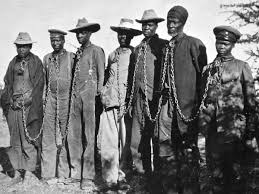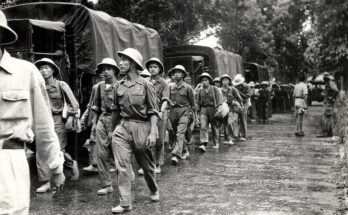The Herero and Namaqua Genocide, often overlooked in history, was one of the first genocides of the 20th century. Occurring in German South West Africa (modern-day Namibia) between 1904 and 1908, it resulted in the deaths of tens of thousands of Herero and Namaqua people. This dark chapter in colonial history reflects the brutal consequences of European imperialism in Africa. In this article, we delve into the events, causes, and legacy of the Herero and Namaqua Genocide to better understand its significance.
Introduction
How does a tragedy so immense fade into obscurity? The Herero and Namaqua Genocide is a stark reminder of the devastating impact of colonialism. It was a deliberate campaign of extermination, yet it remains a relatively unknown atrocity. What happened during this dark period, and why is it important to remember?
Who Were the Herero and Namaqua People?

The Herero and Namaqua were two prominent ethnic groups in German South West Africa. The Herero were primarily cattle herders, while the Namaqua (or Nama) were semi-nomadic pastoralists. Both groups had rich cultural traditions deeply connected to the land. However, their way of life was upended by German colonization in the late 19th century.
The Scramble for Africa and German Colonization
In the late 19th century, European powers rushed to claim African territories in what became known as the Scramble for Africa. Germany established control over South West Africa in 1884. The colonizers imposed harsh policies, seized fertile lands, and subjected the indigenous populations to forced labor and exploitation.
The Roots of Conflict
Tensions between the German colonial government and the indigenous communities grew as settlers encroached on traditional lands. Cattle, vital to the Herero economy and culture, were confiscated, and oppressive taxation further fueled discontent. By the early 1900s, resistance to colonial rule was mounting.
The Herero Uprising of 1904
In January 1904, the Herero, led by Chief Samuel Maharero, launched a rebellion against the German colonizers. Initially, they had some success, attacking outposts and settlers. However, the German response was swift and brutal, marking the beginning of the genocide.
Extermination Orders by General Lothar von Trotha
In August 1904, General Lothar von Trotha was appointed to crush the rebellion. He issued the infamous Extermination Order, declaring that all Herero, whether armed or unarmed, would be killed. This marked the beginning of a campaign of systematic slaughter, forcing the Herero into the Omaheke Desert, where many died of thirst and starvation.
The Namaqua Resistance
Following the Herero uprising, the Namaqua also rebelled against German rule under leaders like Hendrik Witbooi and Jakob Marengo. The German military applied similar genocidal tactics, using concentration camps, forced labor, and executions to suppress the resistance.
Also Read: The Greatest Super Cars That Never Made It to Production
Atrocities in Concentration Camps
Survivors of the desert campaigns were often sent to concentration camps, where conditions were inhumane. The camps, such as the notorious Shark Island facility, were marked by malnutrition, disease, and brutal forced labor. Thousands of Herero and Namaqua perished in these camps.
The Scale of the Genocide
It is estimated that up to 80% of the Herero population and 50% of the Namaqua population were exterminated during the genocide. This systematic destruction left a devastating impact on these communities, both demographically and culturally.
The Role of Racism and Pseudo-Science
The genocide was fueled by racial ideologies prevalent in European colonial thinking. The Germans viewed the Herero and Namaqua as inferior, justifying their actions with pseudo-scientific theories of racial hierarchy. These attitudes laid the groundwork for the atrocities committed.
The Aftermath of the Genocide
After the genocide, German South West Africa remained under colonial rule until the end of World War I, when it was placed under South African administration. The genocide’s survivors were left marginalized, their lands stolen, and their communities shattered. The trauma of this period continues to affect their descendants.
The Long Shadow of Silence
For decades, the Herero and Namaqua Genocide was largely ignored in history books and international discourse. Germany avoided acknowledging its actions, and the victims’ voices were silenced. This lack of recognition deepened the wounds left by the atrocities.
Germany’s Recent Acknowledgment
In recent years, Germany has taken steps toward recognizing the genocide. In 2021, the German government formally acknowledged the atrocities as genocide and pledged financial aid to Namibia for development projects. While these measures are a step forward, debates continue over reparations and the sufficiency of Germany’s response.
The Legacy of the Genocide
The Herero and Namaqua Genocide set a grim precedent for the 20th century. It was one of the first instances where the term “genocide” could be applied, and it highlighted the deadly consequences of colonialism and racial ideologies. Today, it serves as a reminder of the importance of addressing historical injustices.
Lessons from the Past
The genocide underscores the dangers of unchecked power, dehumanization, and systemic racism. By acknowledging and learning from this dark chapter, we can strive to build a world where such atrocities are not repeated.
Conclusion
The Herero and Namaqua Genocide is not just a tragic episode in African history it is a global story of colonialism’s devastating impact. Remembering and honoring the victims is essential to confronting the legacy of imperialism and ensuring that such atrocities are never forgotten. It’s a stark reminder of the cost of silence and the need for justice and reconciliation.
FAQs
1. What was the Herero and Namaqua Genocide?
The Herero and Namaqua Genocide was a systematic campaign of extermination carried out by German colonial forces in present-day Namibia between 1904 and 1908.
2. How many people died during the genocide?
It is estimated that up to 80% of the Herero population and 50% of the Namaqua population were killed, amounting to tens of thousands of deaths.
3. Why did Germany target the Herero and Namaqua?
The genocide was driven by resistance to colonial rule and fueled by racial ideologies that dehumanized the Herero and Namaqua people.
4. Has Germany acknowledged the genocide?
Yes, in 2021, Germany officially acknowledged the genocide and pledged financial aid to Namibia, though debates over reparations continue.
5. Why is it important to remember the Herero and Namaqua Genocide?
Remembering the genocide is crucial for honoring the victims, addressing historical injustices, and learning lessons to prevent future atrocities.


